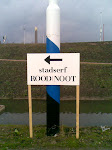'The Theatre of the Absurd' has become a catch-phrase, much used and much abused. What does it stand for? And how can such a label be justified? Perhaps it will be best to attempt to answer the second question first. There is no organised movement, no school of artists, who claim the label for themselves. A good many playwrights who have been classed under this label, when asked if they belong to the Theatre of the Absurd, will indigniantly reply that they belong to no such movement - and quite rightly so. For each of the playwrights concerned seeks to express no more and no less his own personal vision of the world.
Yet critical concepts of this kind are useful when new modes of expression, new conventions of art arise. When the plays of Ionesco, Beckett, Genet, and Adamov first appeared on the stage they puzzled and outraged most critics as well audiences. And no wonder. These plays flout all the standards by which drama has been judged for many centuries; they must therefore appear as a provocation to people who have come into the theatre expecting to find what they would recognize as a well-made play. A well-made play is expected to present characters that are well-observed and convincingly motivated: these plays often contain hardly any recognizable human beings and present completely unmotivated actions. A well-made play is expected to entertain by the ding-dong of witty and logically built-up dialogue: in some of these plays dialogue seems to have degenerated into meaningless babble. A well-made play is expected to have a beginning, a middle, and a neatly tied-up ending: these plays often start at an arbitrary point and seem to end just as arbitrarily. By all the traditional standards of of critical appreciation of the drama, these plays are not only abominably bad, they do not even deserve the name drama. […]

.jpg)

